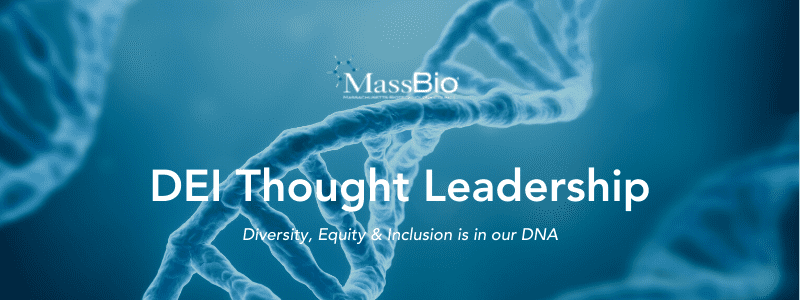This blog post is based on the article “Beyond the gender binary” by Bretton Fostbrook in Gender and Economy. (2019)

Remedying workplace gender inequality continues to be a pressing issue for organizations. Companies are taking bold actions to address gendered gaps in wages and workplace promotions like boardroom gender quotas and targeted recruiting. However, current efforts focus almost exclusively on the challenges cisgender (meaning, individuals who identify with the biological sex assigned at birth) women face.
Current gender equality efforts often neglect the experiences of the estimated 1.5 million adults in the United States and Canada who identify as transgender.
This matters because it means that an estimated 1.5 million adults in the United States and Canada who identify as trans (meaning, individuals who may not exclusively identify with the biological sex assigned at birth) are neglected. This neglect impacts the effectiveness of everything from data on the gender pay gap to employment equity initiatives. Research continues to show that trans and nonbinary (meaning, individuals who do not identify exclusively as either a man or woman) people face structural barriers, biases, and discrimination at work because of their gender identity and expression, barriers that are more extreme for racialized and gender non-conforming individuals. Nonetheless, the majority of research on gender inequality at work continues examine inequalities between cisgender men and women.
Demographics are changing, and so are societal views about gender.
Researchers estimate as many as 12 percent of millennials, who now comprise more than 35 percent of the United States workforce, identify as trans or nonbinary, more than double those from Generation X. A 2019 Pew Research study found those between the ages of 13 and 21 to be more familiar and accepting of gender diversity. They found 35 percent of those surveyed between 13 and 21 knew someone who used gender-neutral pronouns, and 59 percent believed forms and documents should provide gender options beyond “male” and “female.” Organizations should begin thinking beyond the binary not only to support their current employees but also to prepare for the future.
Trans and nonbinary people continue to face overt and subtle discrimination at work.
From over a decade’s worth of qualitative and survey data on the economic experiences of trans and nonbinary people in the United States and Canada, we know that trans and nonbinary people face social barriers and discrimination while seeking to obtain and sustain employment, issues that are compounded for racialized and Indigenous trans people. These include:
- Overt discrimination and harassment: Overtly discriminatory practice include employers refusing to use the employees’ preferred pronouns and names in the workplace and on formal documents like job reviews, and government-driven policies such as placing restrictions or limitations on transgender people from changing government-issued IDs.
- Subtle microaggressions: There are also subtle forms of discrimination that trans people face at work called microaggressions. Microaggressions are statements or behaviours that are not intentionally discriminatory but inflict harm by reflecting power imbalances and stereotypes of marginalized groups. This can include the use of transphobic language, like intentionally calling transgender people by their incorrect gender pronoun, or denying the reality of transphobia, like telling a transgender woman who says she’s experienced discrimination that she is being too sensitive.
Transgender discrimination threatens employment stability, and begins as early as childhood.
Structural barriers threaten employment stability for trans and nonbinary workers, including inadequate access to trans-affirming healthcare, housing and services discrimination, bullying and isolation, and lack of social support from family due to identity stigma.
An survey from 2010 found discrimination to have had systemic impacts on the employment outcomes of trans people:
- Fifty percent of trans people earn $15,000 or less per year, even though 71 percent have some form of post-secondary education.
- The unemployment rate for transgender and gender nonconforming respondents in Ontario has been estimated to be 20 percent, more than double the provincial average.
More recent data from the U.S. Transgender Discrimination Survey reports:
- Trans people were four times more likely to have a household income of less than $10,000 per year compared the national average in the U.S.
- Data from this survey found that racialized transgender women, who contend with intersecting marginalizations, including transmisogyny and racism, are subjected to even higher levels of discrimination and violence at work.
Addressing gender identity and expression discrimination at work
Many employers have begun to acknowledge transgender workers by adopting antidiscrimination best practices and policies. According the Human Rights Campaign, nearly 85 percent of Fortune 500 companies have policies against gender identity discrimination, up from 3 percent in 2002. Additionally, 62 percent of Fortune 500 companies offer transgender-inclusive benefits, up from 0 percent in 2002.
Though there is much that we do not know, research suggests that following tools and practices are a good place to begin:
- Strengthen gender identity and expression protections and prevention measures within organizations if they do not already exist.
- Do a “gender audit” of your policies and practices to identify when and how you invoke gender. Ensure you are not unintentionally “gender policing” in policies like dress codes.
- Assume that there are trans and nonbinary people in your organization even when they are not visible.
- Understand that the employment barriers that transgender people face are distributed unequally.
- Partner with trans people and community organizations to challenge stereotypes, provide training, and build trans employment pipelines and practices.
- Hire openly transgender and nonbinary people even if they force you to challenge your own gender biases. Foster a work environment where people can be authentic. This benefits everyone, not just transgender people.
For more information on best practices for non-binary inclusion in the workplace, please access this guide developed by Out Equal Workplace Advocates.